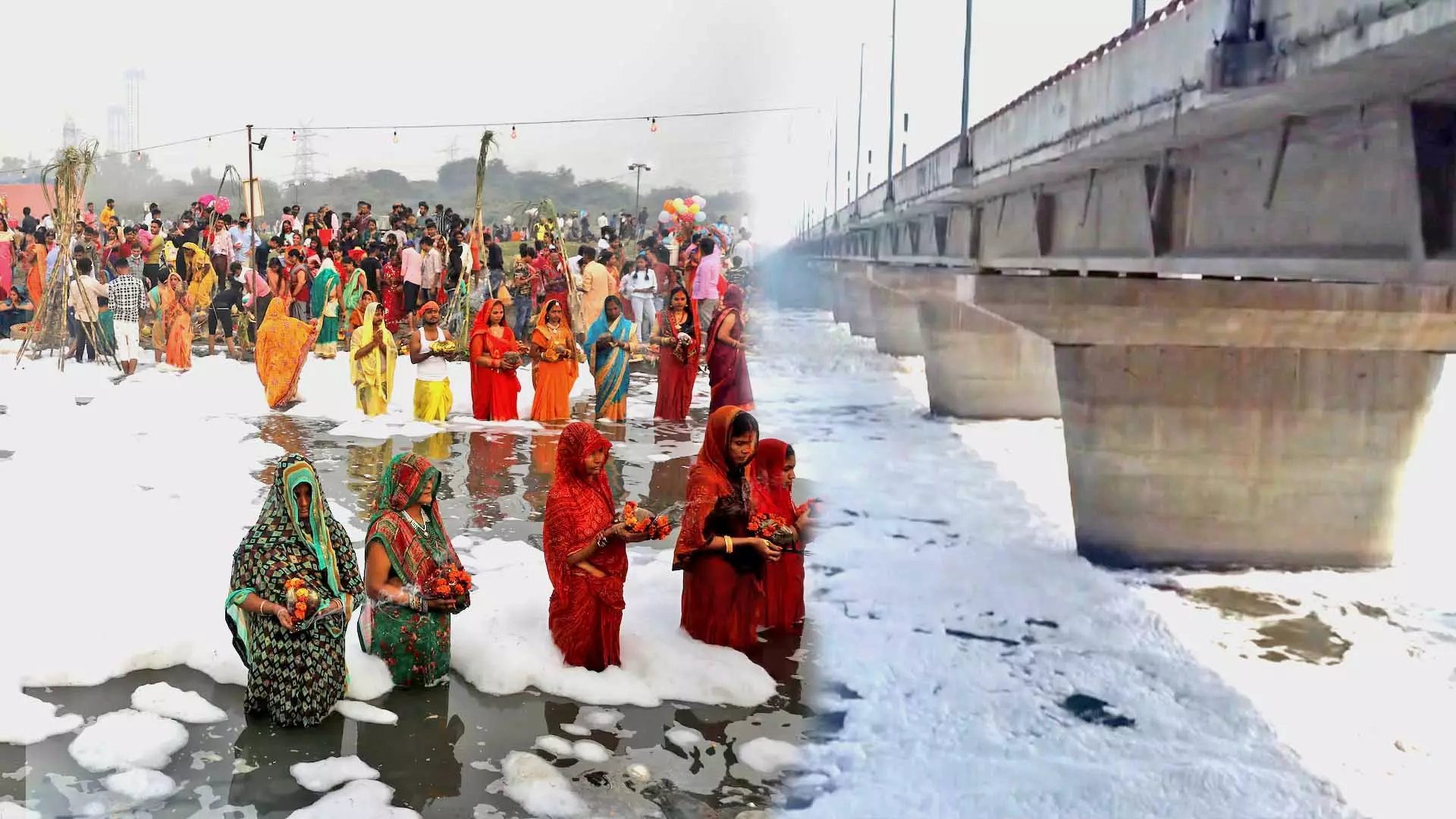
Chhath Puja: Row over 'special pond' ahead of PM Modi’s holy dip in polluted Yamuna
While Chhath Puja is rooted in reverence and tradition, the contrast between faith and the water’s condition is stark. Though the government claims a 90 per cent reduction in waste contamination, official data suggest the River Yamuna is far from recovered

This year’s Chhath Puja has cast a spotlight on River Yamuna’s deep crisis. While devotees prepare to worship the Sun God in its waters, the river’s pollution levels reveal a dangerous reality. A specially constructed pond for Prime Minister Narendra Modi’s ritual has underscored the gap between tradition and public safety.
At Delhi’s Vasudev Ghat, a private pond filled with filtered water from the Wazirabad treatment plant was set up for the PM's Chhath ritual, prompting accusations from Saurabh Bharadwaj, AAP’s Delhi unit president, that the Bharatiya Janata Party (BJP) is “fooling” Purvanchali devotees.
Also read: AAP alleges ‘fake’ Yamuna ghat made for PM Modi; BJP hits back
He claimed: “A fake Yamuna ghat filled with filtered water has been built ... the water for the ghat has been taken from the Wazirabad pipeline.”
Such moves carry symbolic weight ahead of the Bihar election and highlight how political theatre intersects with ritual practices.
Pollution data
The Yamuna’s 22-km stretch through Delhi continues to suffer extreme contamination. In October 2025, the river’s dissolved oxygen levels dropped to zero in segments, rendering it uninhabitable for aquatic life. Untreated sewage and industrial discharge via 19 canals compound the crisis, even though the Yamuna supplies about 70 per cent of Delhi’s drinking water.
Also read: In Bihar, poor Muslim women make clay stoves for Hindu Chhath
The Delhi Pollution Control Committee reported fecal coliform counts reaching 8,000 MPN/100 ml near the ITO barrage — well above safe limits.
Health hazards
Bathing in the polluted river can cause skin rashes, gastrointestinal illness and respiratory issues due to foam and pathogens. Long-term exposure to heavy metals and industrial toxins poses risks of neurological disorders, organ damage and cancer. Clean water metrics (BOD ≤ 3 mg/L, DO ≥ 5 mg/L) are missed by most ghats — e.g., at Okhla Biochemical Oxygen Demand (BOD) hits 30 mg/L.
Faith vs reality
While Chhath Puja is rooted in reverence and tradition, the contrast between faith and the water’s condition is stark. Though the government claims a 90 per cent reduction in waste contamination, official data suggest the river is far from recovered. Experts argue that constructing clean ponds at ghats offers temporary relief, but the broader solution lies in industrial regulation, sewage treatment and restoration of the Yamuna’s ecosystem.
Will a sacred ritual spurred by devotion force the revival of one of India’s most polluted rivers?
(The content above has been transcribed from video using a fine-tuned AI model. To ensure accuracy, quality, and editorial integrity, we employ a Human-In-The-Loop (HITL) process. While AI assists in creating the initial draft, our experienced editorial team carefully reviews, edits, and refines the content before publication. At The Federal, we combine the efficiency of AI with the expertise of human editors to deliver reliable and insightful journalism.)

